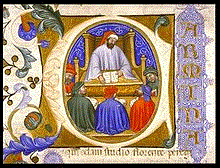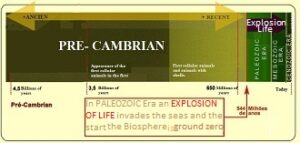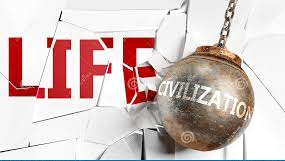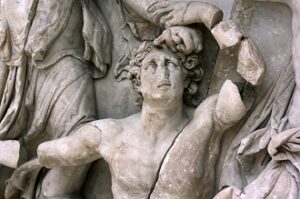
Arquivo para a ‘SocioCibercultura’ Categoria
Exemption from violence and anger
It was not the Abrahamic religions (Islam, Judaism and Christianity) that exempted violence, as Peter Sloterdijk thought in Wrath and Time (Sloterdijk, 2010), in fact it was the idea of the Enlightenment that made violence and domination, from the beginning of expansion of mercantilism and which later became colonial-imperialism, which was anti-clerical and little religious, and was later sacralized in Hegel’s “absolute”, whose image of power and the State is juxtaposed with power and domination and has nothing linked to God.
Judaism and Christianity) that exempted violence, as Peter Sloterdijk thought in Wrath and Time (Sloterdijk, 2010), in fact it was the idea of the Enlightenment that made violence and domination, from the beginning of expansion of mercantilism and which later became colonial-imperialism, which was anti-clerical and little religious, and was later sacralized in Hegel’s “absolute”, whose image of power and the State is juxtaposed with power and domination and has nothing linked to God.
Thus this power is the relief from violence and its capture and guardianship by the state, this way the colonial and imperialist plan can be developed, the basis of today’s civilizational crisis, it is a military and autocratic arrogant state, liberal only in name, it cannot result in something else: anger.
Sloterdijk’s observation about lightness and relief is particularly clear. Supposing that progress would go on a progressive journey, we would think of a more trivial answer that he would be leading people in better conditions than before, and this is not true.
The author also talks about pain, he remembers that until 1940 the idea of pain was normal in surgical center treatments, he doesn’t mention it but I remember that scars on men’s faces indicated virility and some were done on purpose, predecessors of current tattoos, the author remembers that painkillers appeared in the 40s and then little by little antidepressants and stimulants and finally plastic surgeries that corrected what needs to be corrected in us.
The author says that thinking on the right is discipline and on the left is the salvation of the poor, discipline falls into dreams and leads to the world of the moon, while poverty in its fallen condition, persecuted by an unjust system is always seen victimized, which is not always real, so both narratives escape a concept of justice, peace and balance and we find ourselves in narratives that justify anger and contempt for the Other, moving towards anger.
If the being must be light it is to be someone who is not serious, so the lightness of the being is unsustainable, it must be in both narratives “heavy”, transforming into gas balloons that are flying aimlessly, the flight itself is not is reasonable, although the ultimate desire is everything can, but nothing is.
If the being must be light it is to be someone who is not serious, so the lightness of the being is unsustainable, it must be in both narratives “heavy”, transforming into gas balloons that are flying aimlessly, the flight itself is not is reasonable, although the ultimate desire is everything can, but nothing is.
The popular Brazilian songbook says: “there is no sin on the side below the equator”, but that was already the case in post-Renaissance Europe, in Dante’s “divine comedy” which became Balzac’s human comedy, it was there that did the circumnavigation (in picture the Art for Jacob Hashimoro), yes the earth is round, so the people should be dominated and colonized, again Slotertijk’s spherology makes sense.
The fundamental event of our time is to get out of this heavy burden of dogmatism, from the perfectionist stress of the tired society, to get out of the physical, discursive, political, design and spatial battles, technology for man and not for man, robots are machines.
It’s the agony of what was heavy and no longer has a coherent narrative. spherology is based on the principle that a kind of “hermeneutics of existence” must form art of figures, meanings and vocabularies of a light existence, let’s say, discharged from hatred for the Other who is not our mirror, of course the reverse path is there, he leads to anger and violence.
Sloterdijk, P. (2010) Rage and Time, translation by Mario Wenning, New York, Columbia University Press.
Error, correction and peace
The first thing that dies in a war is the truth, and this is bilateral, because the oppressed in retaliation will do things that they condemn to the aggressor.
this is bilateral, because the oppressed in retaliation will do things that they condemn to the aggressor.
Collective correction is possible if there are regulatory bodies capable of being impartial, when they too cannot get out of the bilateral error peace is increasingly distant, when measures of unilateral punishment are taken they are also agents of aggression, it does not mean that they should not impose sanctions and even courts where war crimes are tried.
This is why we are dealing this week with philosophical, legal and moral truth, the biggest and most serious mistake made when courts and public morality bodies become corrupted, it is a harbinger of established chaos and can lead to an escalation of war.
In terms of morality, one cannot forget and stop expressing personal mistakes, but punishment must go through stages or rounds of negotiation and circumvent the biggest problems of a dispute, it is difficult, but only impartial bodies and personnel can obtain this result .
As we discussed in the previous post, truth is ontological, it is realized with the existence of Being, but it is also Being, and this is not the ontological argument of Anselmo da Canterbury: “truth is the straightness of the object perceived by the mind. And what is righteousness? It is something to be what it is”, of course, and this Being that is being necessary “proves” the existence of God.
Anselm was actually from Aosta, Italy, he was called from Canterbury, because being a Benedictine monk he was called to be Archbishop of Canterbury, in England where he died, what is little known and should be better understood within the history of science is the influence of Boethius, famous for the “quarrel of universals” and a true genesis of the concepts of science.
All these temporary truths are important, Karl Popper’s argument of the falsifiability of science, as well as Thomas Kuhn’s structure of scientific revolutions only help to tend that there are ex-sistent truths and those that are eternal, which Boethius will propose as “universal ”, however it is not a relationship between subject and object, but pure Being, the universe itself if there was no Big Bang, the discoveries of James Webb seem to go in this direction, it does not invalidate the Being that is, the one that always was and always will be, but help her.
The prophet Micah, who announced the coming of the One who is, and said that he would be born in tiny Bethlehem, said in this way (Micah 5:1): “You, Bethlehem of Ephrath, little among the thousand towns of Judah, from you will come the one who will rule in Israel; its origin comes from remote times, from the days of eternity “, Micah lived approximately between 750 to 690 BC.
Regarding personal correction, the biblical proposal is valid for everyone (Mt 18,15-16): “If your brother sins against you, go correct him, but in private, alone with you! If he listens to you, you have won your brother. If he does not listen to you, take one or two more people with you, so that the whole matter may be decided on the word of two or three witnesses.”
Miquéias also recalls in the text that “He himself will be peace” (Micah 5,4) it is also ontological, without the recognition of the Being, of the dignity of each person (Boethius was the first to raise this question) there is no peace, there is no there is truth and not justice, although they use this against peace, nothing more unfair and wrong.
Religion, philosophy and humanism
Neither is he who simply proclaims a faith without knowing it, nor is he who follows a series of precepts without understanding the fundamentals. In Christianity what is Love, the philosopher Hannah Arendt, for example, studied as her doctorate “Love in Saint Augustine” while Edith Stein discovers from philosophy and Saint Teresa of Ávila a religious path and became a nun and martyr (died at Auschwitz).
knowing it, nor is he who follows a series of precepts without understanding the fundamentals. In Christianity what is Love, the philosopher Hannah Arendt, for example, studied as her doctorate “Love in Saint Augustine” while Edith Stein discovers from philosophy and Saint Teresa of Ávila a religious path and became a nun and martyr (died at Auschwitz).
There is much apology for superstitions and beliefs in the religious environment, but they were not unknown to Jesus, the question of the Sabbath is famous, in which Jesus asks if it is fair to save someone from an illness on Saturday (Matthew 12:10), he calls the Pharisees “whitewashed tombs” (1Jn,2,27) and finally ends by revealing to the apostles that he will have to suffer a lot from the elders, the high priests and teachers of the law (Matthew 16,21-22), to which Peter is scared and asks that this not happen, and Jesus scolds him and calls him saying that he did not have a divine inspiration.
So it is not the model of public life of many nominal religionists, false prophets and people with little depth of faith that we can understand what religion is, but there is an anthropological, philosophical and clear theological sense that underlies the teachings of love, of enduring the cross, of not building hatred, revenge or resentment in the fashion of those who do not believe.
Augustine overcame the Manichean dualism of good against evil, it is about Love that is far superior to everything and evil is just its absence, Boethius and later Thomas Aquinas instituted the question of the person and the Being, which is part of the polis, but inseparable from it.
The importance of Severino Boécio, venerated as a saint by the Catholic Church (his date is October 23rd) for the history of science and philosophy, the “quarrel of universals” and the importance of reason, Thomas Aquinas and current figures such as Edith Stein do not separate faith from human thought and contemporary humanism.
From this was born modernity and its dualisms (objective x subjective, body x mind, spiritual x material) part of the ontological dualism: being is and not being is not, however, there is now the principle of the third included coming from Stéphane Lupasco and Barsarab Nicolescu, it’s physical and real
It is time to review humanism and no face of human reality can remain without a necessary revision: what is the Being, what is the idea (the Greek eidos linked to Being) and what do the modern myths and cosmogonies mean before a deeper look to the sacred with dialogue and depth.
Religion, anthropology and philosophy
Enlightenment and modern philosophy, on the assumption of abolishing all “superstition” and establishing an age of knowledge and reason, divided the system of knowledge into subject and objects, medieval philosophy was not very far from this, there were realists and nominalists and none won, all changed, and everything that was considered “metaphysical” including the Being was left aside.
assumption of abolishing all “superstition” and establishing an age of knowledge and reason, divided the system of knowledge into subject and objects, medieval philosophy was not very far from this, there were realists and nominalists and none won, all changed, and everything that was considered “metaphysical” including the Being was left aside.
However, the ideas of concepts, structures that should develop knowledge were already present in an author little read, but important: Boethius (400 – 524 AD), a philosopher, poet, statesman and Roman theologian, whose works had a profound influence on Christian philosophy. from the Medieval.
His main work is the “Consolation of Philosophy”, but his is the “wheel of fortune” and a fragment finds what became known as “the quarrel of the universals”, if the universals (concepts would be today) would be today “if the universals are things or mere words”, hence the division between realists who see things and nominalists who defended “names”, words.
But both Boethius and later Thomas Aquinas who studied and translated Greek works, with their own interpretations, the question of Being was present and the question of history and truth as well.
His humanistic contribution lies in the conception of what we now call “human dignity”, for his Philosophical Anthropology the human person on the horizon of rationality considering his singularity data, a new humanism cannot do without its new and still little understood prism, for Boethius was a staunch defender of the faith for Christians and for humanists his De Consolationes Philosophiae brings essential collaborations.
Even today, his ideas may seem controversial, when he defends that man is also nature, but that he must subsist and achieve it as an extension of “nature”, he says in another work:
“Or, if ‘person’ does not equate to ‘nature’, but if ‘person’ subsists under the reach and extension of ‘nature’, it is difficult to say to what natures it always occurs, that is, to what natures it is fitting to contain ‘person’ and which of them should not be separated from the word ‘person’. Indeed, this is clear: ‘nature’ underlies ‘person’ and ‘person’ cannot be predicated beyond ‘nature'” (Boethius, Against Eutyches and Nestorius, 2005, p. 163).
At a time when anthropocentrism is questioned and the relationship with nature is reviewed, it is important to read this medieval philosopher, theologian and humanist.
Boécio. (2005) Escritos (OPUSCULA SACRA). Tradução, introdução, estudos introdutórios e notas Juvenal Savian Filho. Prefácio de Marilena Chauí. São Paulo, Brazil: Martins Fontes.
Myths, primary orality and religions
Myth is a way of explaining phenomena, not only natural, but also cultural and historical, in order to maintain a certain fact that occurred beyond the factual state, orality is a form of communication and religions have a structure of cosmogonies that give the facts a deeper meaning.
not only natural, but also cultural and historical, in order to maintain a certain fact that occurred beyond the factual state, orality is a form of communication and religions have a structure of cosmogonies that give the facts a deeper meaning.
It is necessary to highlight in religions and ancient primary oralities the role of oracles and prophets, who had some “authority” to narrate historical facts so that understanding was maintained and narrative deviations were avoided, and between oracles and sophists there is a distance.
Sophists existed and still exist to elaborate narratives that justify power, even the atrocities and excesses that occur and are often confused with false prophets and oracles of power.
However, myths were necessary countless times in history, the battle narrated in the Iliad and Odyssey in the form of poems, can only imply a narrative of power, however there some myths are used as a way of maintaining a narrative and there was the battle.
As for the religious myth about Adam, it is even possible that it existed, but the human origin is now known from research that there was a variation between Neanderthals and Homo Sapiens, the first ones that disappeared had a more elongated skull and stronger teeth and that were born earlier, which better adapted them to less treated and harder foods.
All we know of the origin of life is the emergence of microbiotics in the early oceans and then small multicellular animals and shells (pictured) in the Precambrian period.
However, very recent discoveries show that not only did they coexist and interbreed, as there are DNAs from Neanderthals that are still present in current humans, but Neanderthals disappeared about 40,000 years ago.
Thus, the Adamic biblical myth must be understood in two ways, the first is that man came from nature (in the biblical narrative of clay) and that somehow, which even science has difficulty explaining, among the lives that emerged in the formation of the biosphere, man was formed, the second explanation is that the children Abel was a shepherd and Cain a farmer, so it is the sociological period that man already cultivates and initiates the “control” of nature.
Primary orality will play a fundamental role in transmitting the “knowledge” that facilitates this control, and myths must signify this primary “control” of nature, as well as oral transmission without deviations.
Philosophy of testimony
The philosophy of testimony (also, epistemology of testimony) considers the nature of language and the confluence of knowledge, which occurs when beliefs are imposed between speakers and hearers through testimony. Testimony constitutes words, gestures or statements that convey beliefs.
of testimony) considers the nature of language and the confluence of knowledge, which occurs when beliefs are imposed between speakers and hearers through testimony. Testimony constitutes words, gestures or statements that convey beliefs.
According to Nick (2023) what we know about the world: history, science, politics, each other, etc. comes from the testimony of other people, although it is indispensable for knowledge, specifying exactly how we are able to learn from a speaker’s opinion is a very difficult task, what I point out personally is our ability to open and listen (or read).
Still on the author, testimony is the basic source of justification, but can it be reduced to a combination of other epistemic sources, such as perception, memory and interference?
Another question is: can testimony generate knowledge or just transmit it?
It can be understood as only individual (in the sense that one’s testimonial justification depends entirely on factors related to oneself), or it must be seen as anti-individualistic (in the sense that one’s testimonial justification depends on one, at least in part , from factors that have to do with yourself) ?
How to understand the testimony between an expert and a new one?
Do groups witness? And if so, how can we learn from the opinion of a group?
What is the testimony itself? (since it is not to be confused with narrative, but with experience).
In his work, the author clarified that these are not the only questions, citing other authors such as M. Fricker (2007) who takes the issue of crediting testimonies that gave rise to an epistemic injustice, there are also interesting questions regarding eyewitness testimony and the law (Wells & Olson, 2003) and (Burrogghs & Tollefsen, 2016), as well as witness and affirmation (Pagin, 2007 [2016]).
There is also what he considers particularly important, which is a growing literature on moral and aesthetic testimony, and the author gives the example of the opinion of a friend who believes that eating roast beef is morally wrong because only his friend tells him so.
However, the author focuses on the issues mentioned above.
The witness must therefore be a leaven of truth and have experience in order to be credible.
Burroughs, Michael D. and Deborah Tollefsen, (2016), “Learning to Listen: Epistemic Injustice and the Child”, Episteme, 13(3): 359–377.
Fricker, Miranda, (2007), Epistemic Injustice: Power and the Ethics of Knowing, Oxford: Oxford University Press. doi:10.1093/acprof:oso/9780198237907.001.0001
Pagin, Peter, (2007 [2016]), “Assertion”, The Stanford Encyclopedia of Philosophy (Winter 2016 Edition), Edward N. Zalta (Ed.), URL = <https://plato.stanford.edu/archives/win2016/entries/assertion/>
Wells, Gary L. and Elizabeth A. Olson, (2003), “Eyewitness Testimony”, Annual Review of Psychology, 54: 277–295. doi:10.1146/annurev.psych.54.101601.145028
Exodus: historical and divine realities
The history of Ancient Egypt is generally divided into the Old Kingdom, from the great pyramids of the pharaohs Cheops, Chephren and Mycerinus, built near Memphis, the capital of Egypt at the time, then the Middle Kingdom (2100 BC to 1580 BC), the biblical character is born at the end of this period, and the New Kingdom (1580 BC to 715 BC), when they begin to face invasions until they are defeated by the Assyrians (6 70 BC).
divided into the Old Kingdom, from the great pyramids of the pharaohs Cheops, Chephren and Mycerinus, built near Memphis, the capital of Egypt at the time, then the Middle Kingdom (2100 BC to 1580 BC), the biblical character is born at the end of this period, and the New Kingdom (1580 BC to 715 BC), when they begin to face invasions until they are defeated by the Assyrians (6 70 BC).
In the biblical narrative one can divide the: first (1,1-15,21): coexistence in Egypt from Joseph to Moses; second (15.22-18.27): theophany and journey in the desert to Sinai; third (19-40): option for the divine proposal (Moses is called to lead the Exodus) and the covenant on Sinai.
It is interesting to observe the sequence that is repeated in the period of Abraham: leaving Ur in Mesopotamia, walking to Canaan, the alliance with Abraham (Gen 17:15-17) and the call to God in the offering of his son Isaac and the formation of the 12 tribes of Israel and the sale of Joseph to the Egyptians.
It is important to analyze the 10 plagues in Egypt in this biblical-historical context, a famous papyrus found in 1909 of an Egyptian called Ipuwer (or Ipuur which according to the scholar A. H. Gardiner was a typical name of the period 1850 BC -1450 BC), written in the form of a poem complains that women now have “furniture”, and girls have “mirrors” while the rich man lives in rags.
The papyrus is important for its connection with the biblical narrative, mentioning slaves fleeing Egypt and rivers of blood, but scholars speak of the Minoan eruption, which occurred during this period on the island of Santorini, near the island of Crete, which devastated a Minoan settlement.
The waves produced may have reached Egypt at the time, but the effect on the Nile delta is questioned by most fishermen, but the Ipuwer papyrus has a narrative close to the biblical one regarding the events in Egypt and, most importantly, narrates the beginning of the fall of the Empire through customs, a period that history calls the New Empire.
The 10 plagues of Egypt in the biblical narrative were: the river of blood, infestation of frogs, lice and flies, plague in cattle, ulcers in people, hailstones, infestation of locusts, darkness and the death of the firstborn of families.
As described in previous posts, the people of Israel guided by Moses will cross the desert, reach Canaan after four wars and stay there until a new exile in Babylon.
Egypt after the invasion of the Assyrians mentioned above, later they were dominated by the Persians in 525 BC. and by Alexander the Great in 322 BC, finally by the Romans in 30 BC.
Whether for purely historical reasons, social decay or divine intervention, empires fall from the oppression and tyranny they exercise, but there is a cycle of suffering.
Civilization and dissent
There is “An Evil in Civilization” wrote Sigmund Freud in 1929, after his appeal reached where he predicted the 2nd. World War, at this moment extrapolates the cultural and is almost exclusively psychic, reason and high thinking are not in fashion, values are inverted, what remains is the couch.
appeal reached where he predicted the 2nd. World War, at this moment extrapolates the cultural and is almost exclusively psychic, reason and high thinking are not in fashion, values are inverted, what remains is the couch.
At a time like this, everything around us gets worse, it’s not just the economy and politics, spending on medicines and doctors increases, educational and justice capabilities are distorted in defenses and accusations with the help of lawyers or public defenders without changing the course of dissent, the time and content for educating dialogue, criteria and reason is reduced.
Also in the educational and social areas; the excess of actions and attempts at models, which are motivated by misunderstandings on both sides, theoretical models and teaching methods, live with the difficulty of facing dissent and often result in the total loss of hierarchy or sense of value, the difficulty of accept (or exercise) what would be authority.
At the same time that authority is confused with authoritarianism, disorganizes the school mission and often prevents public discourses of discussion and responsible dialogue from being exercised, values, even spiritual ones, collapse, everything seems to collapse in a cascade.
Sometimes all that remains is to listen and remain silent, sometimes it is necessary to correct with courage, but dialogue is always possible, and patient listening ponders even when it differs.
It takes models that correspond to life, to ethical and moral social interaction, to save empathy and mutual respect, when only some want respect that they do not offer to others, there is no way to start a fruitful dialogue process.
There are niches of civilizing coexistence, there are peoples and places where dissent has not settled, where hatred has not won and hope still lives.
Finding and giving value to these little lights that illuminate the civilizing night is fundamental, otherwise doctors, psychiatrists and educational methods will not be functional, they will have no life.
Truth and Hermeneutics
It was Hans-Georg Gadamer who developed and founded a deeper criterion for  making a correct interpretation of method and truth (the name of his two-volume book) in the human sciences, and it is not about opposing the natural sciences, but giving the sciences social a soul and a “spirit”, even the one understood strictly in non-religious thought, but that actually seeks the truth and not the syllogism, pure logic or even sophistry.
making a correct interpretation of method and truth (the name of his two-volume book) in the human sciences, and it is not about opposing the natural sciences, but giving the sciences social a soul and a “spirit”, even the one understood strictly in non-religious thought, but that actually seeks the truth and not the syllogism, pure logic or even sophistry.
Gadamer clarifies right at the beginning of his masterpiece: “The fact that I used the expression “hermeneutics”, weighing an old tradition on my shoulders, certainly led to misunderstandings” (GADAMER, 1997, p. 14) .
Returning to the question of the natural sciences, the author clarifies the misunderstanding “the famous Kantian distinction between the questionio juries and the questionio facti” (Gadamer, 1997, . 16), it was not a question of a court of reason, but “.It posed a philosophical question, that is, he asked about the conditions of our knowledge, through which modern science becomes possible, and what is the scope of science” (idem).
Thus his philosophical behavior in response to the question: “what is knowledge” was developing the temporal analysis of existence: “which Heidegger developed, I think, convincingly showed that understanding is not a way of being, among other modes of behavior of the subject, but the way of being of the pre-sence itself (Dasein)” (ibidem).
Before entering the question of history, he seeks its origins by stating: “However, where is the world and the afterworld really separated? How does the vital significance of the originary pass into the reflective experience of the significance of formation?” (GADAMER, 1997, p. 17).
Humanism had not been separated from the religious phenomenon: “One should recognize and admit that an ancient image of gods, for example, which was not represented in the temple as a work of art for the aesthetic enjoyment of reflection, and which today has its representation in the modern museum, contains within itself the universe of religious experience.” (GADAMER, 1997, p. 18).
Thus, before reflecting on history, Gadamer will reflect on art, and does not fall into the dualism of subjectivism, he exposes his conviction that: “Thus, no one will convince me, objecting to me that the reproduction of a musical work of art is interpretation in a different sense than, for example, the achievement of understanding in reading poetry or looking at an image.” (GADAMER, 1997, p. 19).
The artistic experience in its “method” and “truth” is not exclusive, but it is the one that allows greater breadth in its conception of what really leads us to the “method” that guides the “truth”.
Gadamer, H.G. (1997) Verdade e método. transl. Flávio Paulo Meurer. Brazil: Petrópolis, RJ: ed. Vozes.
The forest bordering the clearing
Modern man, victim of ideologies, cultures and religious apostasy lives only with the awareness of individual freedom, without really understanding who is the Other who is not equal, the Korean/German philosopher Byung Chul Han developed this in “The expulsion of the other : Society, perception” (Editora Vozes, Brazil) in which he talks about the adipose emptiness of fullness.
of individual freedom, without really understanding who is the Other who is not equal, the Korean/German philosopher Byung Chul Han developed this in “The expulsion of the other : Society, perception” (Editora Vozes, Brazil) in which he talks about the adipose emptiness of fullness.
This emptiness has nothing to do with the phenomenological epoché, opening the mind and soul to dialogue and receive the Other, the different, the discourse and the narrative contrary to ours, to later merge the horizons in the “hermeneutic circle”, the emptiness of soul is positive, it elevates us.
Through successive tragedies, the pandemic was the first and will not be the last, and this is not about an apocalyptic discourse, but about the social realization of a civilizing crisis in an increasingly profound and dangerous process, not only in the rulers, but also in personal conscience.
Chul Han goes so far as to say these processes are obscene in “hypervisibility, hypercommunication, hyperproduction, hyperconsumption, which lead to a rapid stagnation of the same. Obscene is the ‘connection of like with like’ (Han, 2022) in short, everything translates into an obscene sameness.
He cites a very illustrative example which is the animation Anomalisa by Charlie Kaufmann (photo), which talks about a speaker Michael who goes to Cincinnati for a lecture and there approaches a person by his voice, Lia is a person who already knows him and came to see his talk and fall in love.
But the hell of the same are the employees of the Hotel, all the same and who want to seduce Michael.
The essay emphasizes erotic love, but this also applies to agapic love, without falling in love and dialoguing with what is different, we live in the hell of the same, in our vicious circle, in an environment full of vices and obscenities, in the worst sense of word.
In the biblical narrative, Moses, who was trying to lead his people to a new path, wanted to stone him and blasphemed against the proposal of a different life (Exodus 17,3-7), even asked for the return of Egyptian slavery (any resemblance to the current politics is no coincidence), and also in chapter 4 of John, Jesus goes to meet the Samaritan woman, a woman and “pagan” and dialogues with her
In the week that women’s day was celebrated, this is important, which is not a biblical detail, but the essence of her message, Jesus, when meeting her, finds her interest strange and says “How come you, being a Jew, ask drink to me, a Samaritan woman?” (Jo 5,9).
The obscenity and sameness of the same not only impoverishes each one, but limits the civilizing process that is enriching the more the different can exist with dignity.
HAN, B. C. (2022) A expulsão do outro: sociedade e percepção. (The expulsion of the other: society, perception). Trans. Lucas Machado. Brazil, Petrópolis: Editora Vozes.

